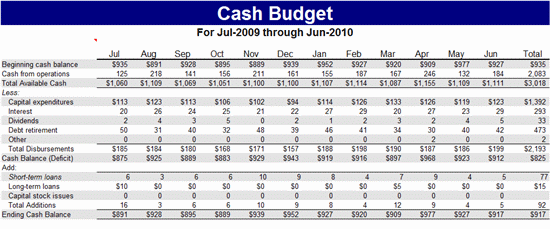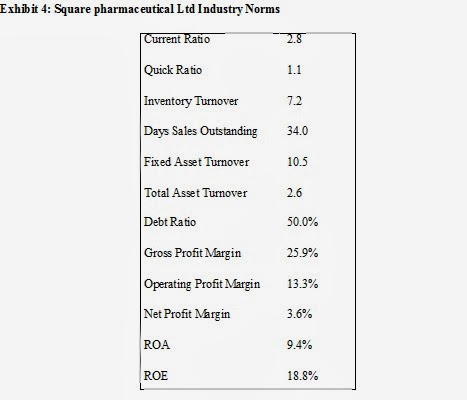Trial Balance: What is Purpose of it in the Accounting Cycle
Content

A parent company may require its subsidiaries to calculate and submit their ending trial balances regularly to monitor https://online-accounting.net/ their financial health. Then the parent company can use these ending trial balances to prepare consolidated results.
The accounting cycle records and analyzes accounting events related to a company’s activities. An additional column showing the folio or code of each general ledger account can also be included. In this lesson we’ll answer all of those questions and learn how to put it together. The articles and research support materials available on this site are educational and are not intended to be investment or tax advice. All such information is provided solely for convenience purposes only and all users thereof should be guided accordingly.
Trial Balance FAQs
Ohio University offers a variety of programs across 10 different colleges, including 250 bachelor’s programs, 188 master’s programs and 58 doctoral programs. Ohio University is regionally accredited by the North Central Association of Colleges and Schools. An accounting error is an error in an accounting entry that was not intentional, and when spotted is immediately fixed. Janet Berry-Johnson is a CPA with 10 years of experience in public accounting and writes about income taxes and small business accounting. You just completed the last of the lessons in our section on theaccounting cycle.
- If the debit balance is more significant than the credit balance, the difference is put in the debit columns.
- The trial balance worksheet displays the closing balance of each of the debited and credited ledger accounts.
- Information flows from the unadjusted trial balance to the trial balance then to the income statement.
A trial balance is defined as a bookkeeping or accounting report that shows all of a company’s general ledger accounts at a specific point in time. The ledger balances are aggregated into equal debit and credit account columns.
Debitoor is now SumUp!
Alternatively, the parent company may require all of its subsidiaries to use the same accounting system, so that all subsidiary results can be automatically rolled up into consolidated financial statements. Debits and credits of a trial balance must tally to ensure that there are no mathematical errors. However, there still could be mistakes or errors in the accounting systems. A trial balance can be used to assess the financial position of a company between full annual audits. There are no special conventions about how Trial Balance Definition trial balances should be prepared, and they may be completed as often as a company needs them. A trial balance is often used as a tool to keep track of a company’s finances throughout the year, whereas a balance sheet is a legal statement of the financial position of a company at the end of a financial year. Thus it can be argued that trial balances are more relevant for manual (hand-drawn) accounting systems, where errors can be made when transferring information through the various steps of the accounting cycle.
Investors eye less risky bets, shift away from platform biotechs – FierceBiotech
Investors eye less risky bets, shift away from platform biotechs.
Posted: Mon, 23 Jan 2023 16:23:28 GMT [source]
Like abalance sheet, it shows the snapshot of the accounting records on a specific date. A trial balance usually consists of three columns with the account names listed in the first column and the account balances shown as debits and credits in separate columns. The total debits and credits are then summed at the bottom of the report.
Location of Errors
Though the trial balance provides arithmetic accuracy of the books of accounts, certain errors are not disclosed. Due to this reason, it is said that trial balance is not conclusive proof of the books of account accuracy.
- He was to pay one third of the amount before the book went to press, the balance he was to pay within a reasonable time.
- It is impossible to explain every account to explain the trial balance, but we will try to touch on those examples, which are important and crucial in accounting for every firm.
- A trial balance is a worksheet prepared periodically before the final set of financial statements are completed.
- An audit is a thorough inspection to make sure all financial transactions are recorded using the correct process and systems.
- This fact provides a reasonable assurance that every debit entry in the ledger accounts does have a corresponding credit entry and that no arithmetical error has been made during the balancing process.
A trial balance can be used to detect any mathematical errors that have occurred in a double entry accounting system. The basic purpose of preparing a trial balance is to test the arithmetical accuracy of the ledger. If all debit balances listed in the trial balance equal the total of all credit balances, this shows the ledger’s arithmetical accuracy. A trial balance is a summary of the debits and credits of all the ledger accounts within an organization over a given period. In other words, it’s a summation of all of the financial transactions that have occurred during that stage. Each accounting entry’s total debits and credits must match at the end of the accounting period. If the debit and credit totals do not match in the trial balance, it means there is one or more unbalanced transactions.
It’s also possible that some accounts were used to record several business transactions. As a result, the trial balance worksheet ending balance for each ledger account is the sum of all debits and credits submitted to that account based on all linked business activities. The profit and loss statement and balance sheet and other financial reports can then be produced using the ledger accounts listed on the trial balance. Trial balance is the first step in preparing the financial statements of any firm. Suppose if the total of both debit and credit sides is not matching, then we have to check the journal entries again and find out what was accounted for wrongly with the transaction. While a trial balance is good for ensuring that the credit and debit balances of business are in agreement, it does not guarantee that the totals will be correct. Errors and fraud can still lurk in either column, despite the agreement in the totals.

For example, if a cash sale for £100 is debited to the Sales account, and credited to the Cash account. At this point the trial balance is known as the adjusted trial balance and the financial statements are prepared.
